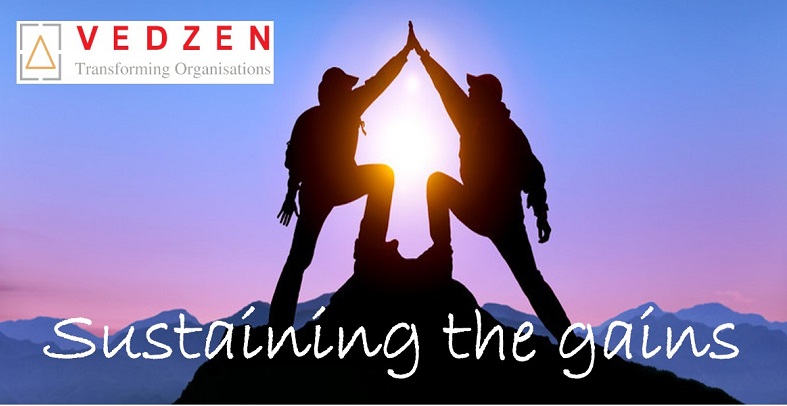Do you belong to the fleet of managers who are practicing Kaizen for quite some time and still say, “We have arranged many training programs/workshops for our workforce but the improvements and gains it brings is very short-lived, it never sustains”?
Well, consultants who are only focused on training employees may introduce many new concepts and philosophies of Kaizen to workers but often leave them confused about the application of various tools on a regular basis to achieve and sustain the gains from it. This is why Sustenance management is one of the most important and inevitable phases for the successful implementation of Kaizen.
Sustenance management comprises two components
- Adhering to sustenance management actions
- Eliminating Anti - Sustenance practices
Adhering to sustenance management actions
- Daily management of the actions planned.
- Verification of all actions implemented at Gemba.
- Effectiveness check with respect to goals set.
- Training on standard procedures through Job instruction, Job method & Job relation.
- Changing the SOP every time after making the improvements so that
- Each one in the organization is aware of the changed processes.
- Standardization is maintained across the organization.
- Recognition & Motivation for the team for good work done.
- Sustenance through Audit System.
- Verification of effectiveness of action implemented.
Eliminating Anti - Sustenance practices
- Satisfaction with status -quo and absence of continuous improvement.
- Obsession with short-term results including profits, market share, costs, budgets & schedules.
- Indiscriminate cost-cutting leads to sacrificed quality.
- Absence of continuous improvement, ideas, and suggestions.
- Working in a silo system, each departmental head is busy in their own department, optimizing the part leads to suboptimum the whole.
- Lack of training for new employees.
- Crisis management, Rushing operations, fire-fighting oriented activities, impractical deadlines.
- Hands-off relationship with suppliers, with contracts being awarded to the lowest bidder.
- Emphasis on correction and inspection rather than a preventive and personal guarantee.
- Unreliable processes and systems.
- Quality is the responsibility of the quality department.
- Centralized and bureaucratic decision-making.
Organizations are tired of housekeeping (5S); cannot move deeper into lean due to a lack of lean strategy. The lean road maps and radars should be defined and made visual, backed up by learning by doing.
Contact us at info@vedzen.com to learn more about sustaining the gains.


Comments / 0